The Angkor Thom temple complex in Cambodia is one of the major attractions in the entire Angkor Archaeological Park. With centuries of history behind them, the temples speak elaborately about the past of Cambodia and the influence of the Khmer Empire. Bayon Temple, with its “Smiling Stone Towers,” is the star of the Angkor Thom complex. With over 200 such stone towers with smiling faces, intricate carvings and almond-shaped eyes, visiting the temple takes you back in time. The temple attracts thousands of tourists annually, eager to explore its intricate bas-reliefs and colossal faces.
Quick Details About Bayon Temple
Bayon Temple Address: Angkor Thom, Siem Reap, Cambodia
Constructed: Late 12th to early 13th century
Commissioned by: King Jayavarman VII
Style: Bayon style, part of the Angkor architectural complex
Bayon Temple Timings: 7:30 AM to 5:30 PM
Entry Fee: Included in the Angkor Archaeological Park pass
Best Time To Visit: November to February
About
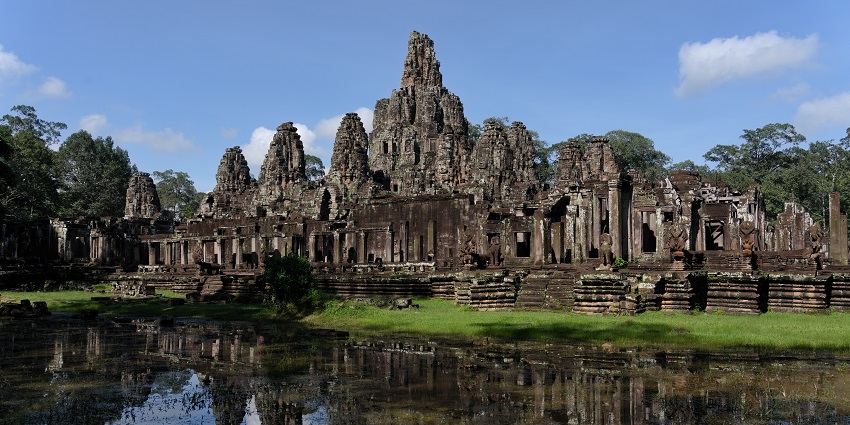
Photo: Satdeep Gill / Wikimedia Commons
Initially dedicated to the Buddhist deity Avalokiteshvara, the Bayon Temple has since been associated with various deities and religious traditions. Tourists get intrigued by the 200+ smiling faces following them around. The temple was commissioned to be constructed under the reign of King Jayavarman VII, who was the prime ruler of the Khmer Empire from 1181 to 1218. Initially, it was built as a state temple of the capital city, Angkor Thom, which was established by Jayavarman VII. One of the biggest influences that come with this temple is the architecture, which transitioned from Hindu to Buddhist influences.
Suggested Read: Cambodia Beaches
Things To Do
1. Explore The Enigmatic Faces
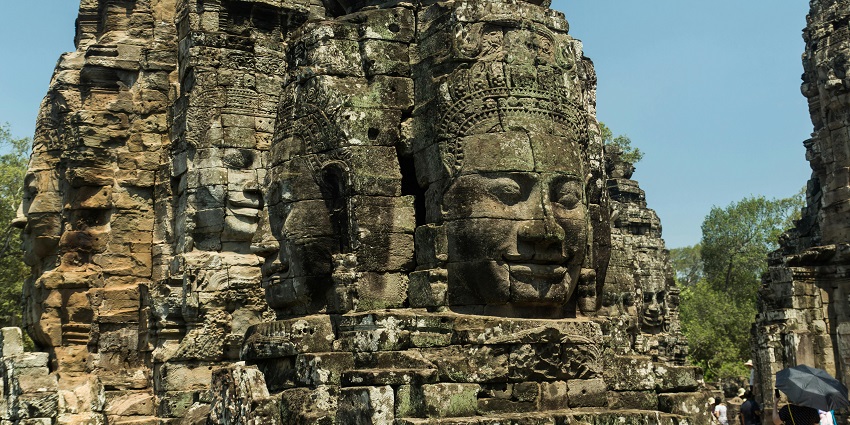
Photo:Lachcim Kejarko / Unsplash
Start the exploration with one of the most obvious elements of the temple – The Faces. There are reportedly 216 such smiling faces, which depict the smiling face of Lord Buddha, more precisely representing Bodhisattva Avalokiteshvara, which King Jayavarman VII was an ardent follower of. As you walk through the temple complex exploring these individual faces, you are bound to be mesmerized by the unique perspective and expression that keeps changing depending on the angle you are viewing it from.
2. Admire The Bas-Reliefs
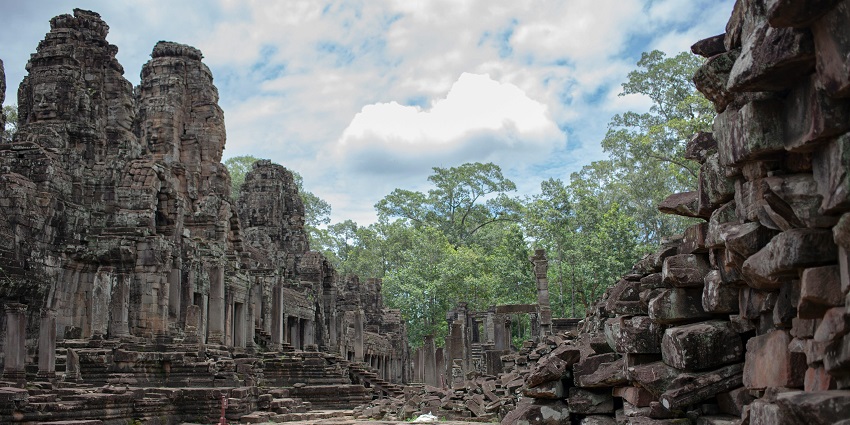
Photo:Guide Pailin Cambodia / Pexels / Image For Representation Only
The second most important architectural element of the Bayon temple is the bas-reliefs, which adorn the walls of the temple. These are reportedly some of the most well-preserved examples of Khmer art, which explains why you need to take your time exploring every one of them and the details in it. Some of the fine examples of the scenes reflected by the bas-reliefs are the Battle of the Lotus Pond and the procession of King Jayavarman VII, as well as scenes of daily life, including market activities and musical performances. You also get to learn more about Khmer history through these bas reliefs.
Suggested Read: Places To Visit In Cambodia
3. Visit The Central Tower
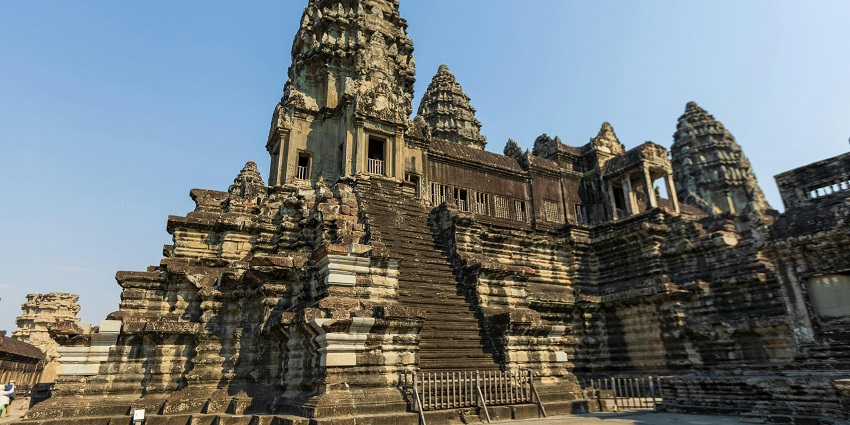
Photo: Angkor Feel / Pexels / Image For Representation Only
As previously mentioned, there is a central tower inside the Bayon Temple, which is surrounded by 54 smaller towers, each representing the 54 Angkor provinces. The central tower is the focal point in the temple and represents Mount Meru, the centre of the universe in Hindu and Buddhist cosmology. Due to its elevation, once you climb up the central tower, the view from the vantage point at the top is quite intriguing and enables you to witness the surrounding landscape and distant temples in the area.
4. Indulge In A Cultural Evening Show
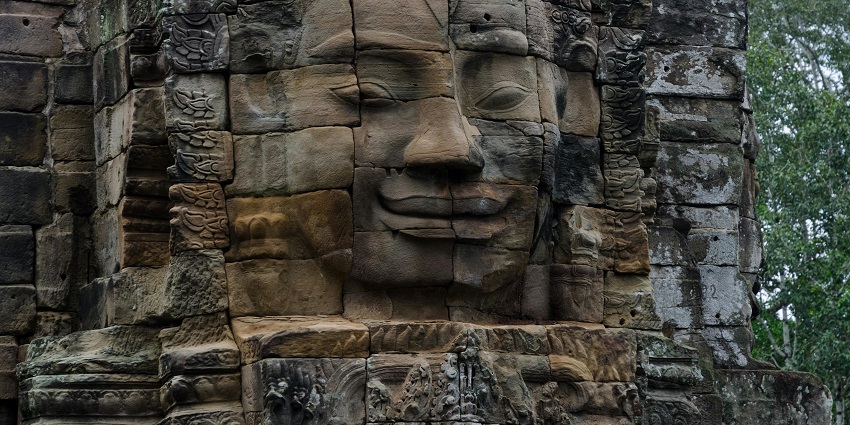
Photo: Uroš Drljača / Pexels / Image For Representation Only
While not held in the Bayon temple itself, these mesmerizing and informative evening shows are usually held in the nearby Angkor Thom complex. During the show, you get to learn about Cambodian history and even get to witness the traditional Apsara dancing, which has deep-rooted significance in their culture. On most occasions, an on-site dinner is usually offered to the guests, further allowing you to indulge in some local delicacies.
Suggested Read: Top Cambodia Temples
5. Witness The Sunrise

Photo:J B / Pexels / Image For Representation Only
To truly appreciate the beauty and the architecture of the Bayon temple, consider embarking on a guided sunrise tour. These are usually quite accessible for tourists where the sunlight hits the stone faces, further amplifying its beauty. During the guided sunrise tours, you also get to learn about the history of the temple and why and how Jayavarman VII commissioned the construction of the temple. It is quite a fascinating experience, getting to immerse yourself in such details.
Places To Visit Around Bayon Temple
1. Angkor Wat
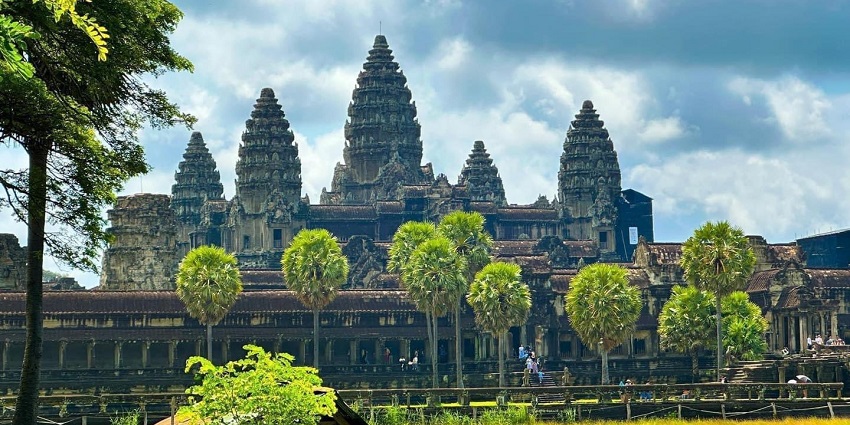
Photo: Pierrevang3 / Wikimedia Commons
Starting with the most iconic and potentially the most popular temple in Cambodia, Angkor Wat. It is located a short drive from the temple and is the largest temple in the Angkor Archaeological Park. It was commissioned to be built back in the 12th century by King Suryavarman II. It was initially constructed to be a place of worship dedicated to Lord Vishnu but was later transformed into a Buddhist temple. The iconic design of this temple represents Mount Meru and there are smaller complexes beside it.
Distance from Bayon Temple: 3.3 Km
Timings: 7:30 AM – 5:30 PM
Entry Fees: Angkor Pass of ₹3106
Suggested Read: Angkor Wat
2. Ta Prohm
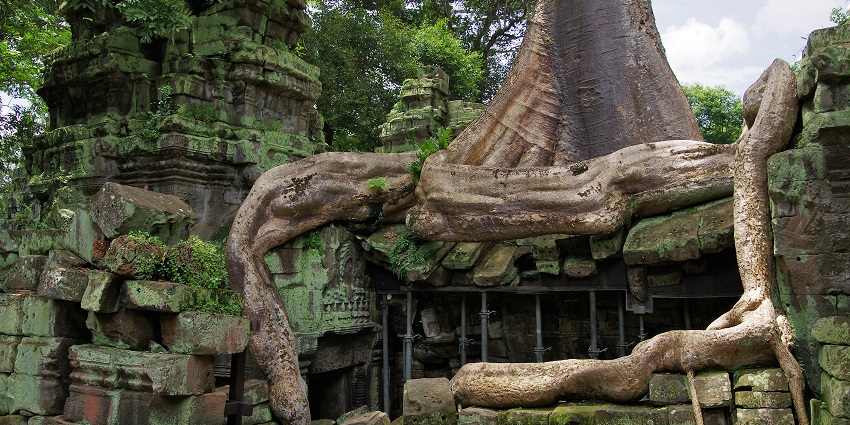
Photo:Phillip Maiwald / Wikimedia Commons
More commonly known as the Tomb Raider temple, Ta Prohm is another popular temple in the Angkor Archaeological Park. It features tree and vine-covered ruins, which add to the characteristic beauty of the temple. The temple was built in the late 12th century and has been left largely in its natural state, with massive trees and roots entwining the ancient stones.
Distance from Bayon Temple: 4.5 Km
Timings: 07:30 AM to 05:30 PM
Entry Fees: Angkor Pass of ₹3106
3. Banteay Srei
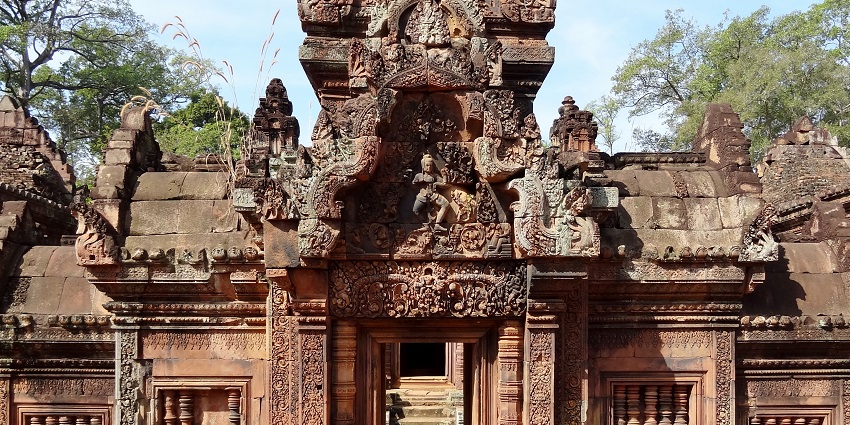
Photo: Olaf Tausch / Wikimedia Commons
Another temple that is a must-visit is Banteay Srei. It is alternatively known as “Citadel of Women,” because legends suggest that the intricate carvings are impossible to be made by men with large hands, so they were most likely made by women. The temple dates back to the 10th century and is dedicated to Lord Shiva. The detailing and beauty of the Khmer art and architecture are well-reflected in this temple.
Distance from Bayon Temple: 29 Km
Timings: 07:30 AM to 05:30 PM
Entry Fees: Angkor Pass of ₹3106
Suggested Read: National Museum Phnom Penh
Where To Stay
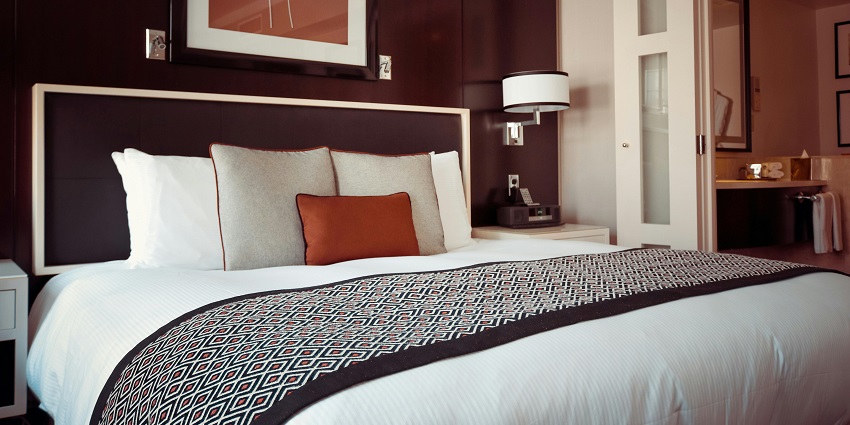
Photo: Pixabay / Pexels / Image For Representation Only
To ensure that you can explore this temple and the other popular temples in the archaeological complex, it is ideal to get a booking in a local hotel or resort in Siem Reap itself. Some of the popular hotels include Grand Venus La Residence, Temptation Hotel, Anansaya La Maison, Pavillon Indochine Hotel and Shintana Saya Residence.
Where To Eat
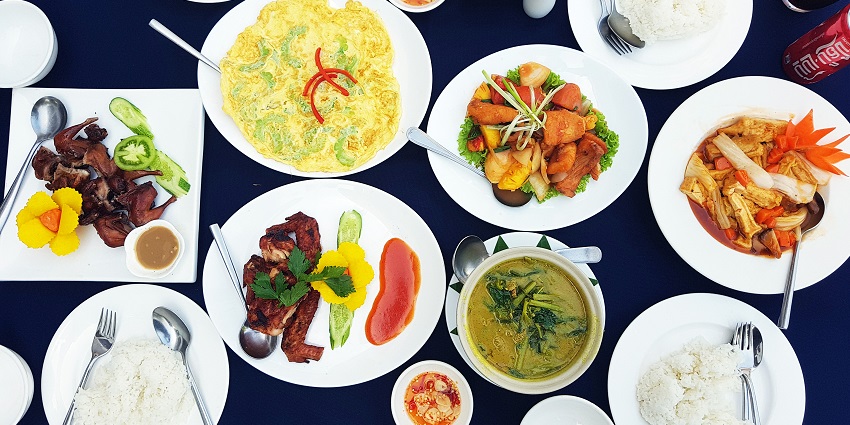
Photo:Saphabodi / Wikimedia Commons / Image For Representation Only
Cambodia is renowned for its local delicacies and if you are interested in trying these delectable dishes, there are several cafes, restaurants and local eateries around the temple. Some of the best options include Try Me, Malis, Butterfly Pea restaurant, New Hope Cambodia restaurant and Royal Spice restaurant.
Suggested Read: Top Cambodia Temples
Other Factors To Consider

Photo: Pixabay / Pexels / Image For Representation Only
Tips For Travelers
- Temple’s complex layout involves a lot of walking and uneven surfaces, so comfortable and sturdy footwear is essential.
- The weather in Cambodia can be hot and humid, so carry water with you and stay hydrated while exploring the temple.
- Ensure that you are dressed modestly when exploring the temples. Also, keep your shoes off before entering.
- You can hire a guide for better historical context and understanding of the temple.
- Consider visiting the temple in the early morning to beat the crowds.
Bayon Temple in Angkor Thom Cambodia is one of the most renowned and architecturally enriching spots to visit and explore in the country. With its enigmatic faces, intricate bas-reliefs, and complex layout, the temple takes you back in time. Plan a trip with TripXL, if you are a history addict and would want to unfold more details about Cambodia’s temples.
Cover Photo: Serg Alesenko / Pexels


 WhatsApp
WhatsApp
 Twitter
Twitter









